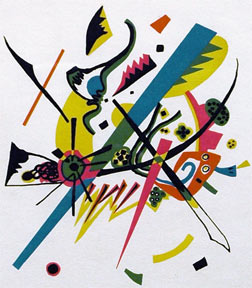The Moderns
dal 21/10/2005 al 21/11/2005
Segnalato da
21/10/2005
The Moderns
Leslie Sacks Fine Art, Los Angeles
New Acquisitions. As used in art criticism, the term 'modern' refers to those styles that emerged in the first decade of the twentieth century and dominated cutting edge art until the emergence of Warhol and the pop movement in the early 1960s. The methodological freedom of expression reflected in this exhibition testifies to the persistent virtues of that vision in a post-modern world.

New Acquisitions
As used in art criticism, the term 'modern' refers to those styles that
emerged in the first decade of the twentieth century and dominated cutting
edge art until the emergence of Warhol and the pop movement in the early
1960s.
The primary characteristic of modernism is abstraction, be it the
expressionistic abstraction of Matisse and Picasso beginning ca. 1905, the
more abstract proto-cubist works of Braque and Picasso ca. 1908, or the
total break with physical reality that first appeared in Kandinsky's
abstractions ca. 1910. The span of this latter, radically abstract aspect of
modernism is represented in this exhibition by Kandinsky's color lithograph,
Kleine Welten (Small World) I from 1922, and Robert Motherwell's abstract
expressionist acrylic and collage, The Black and the Red, 1987.
The origin of the less abstract branch of modernism is represented by Rodin,
whose sculpture opened the door to the expressionistic interpretation of the
human figure. Henry Moore closes the brackets on this set, as it was he who
took figurative sculpture to the absolute limits of representational
abstraction. Chagall is along for the ride, a surrealist who reached back to
the impressionist and post-impressionist roots of abstraction, incessantly
presenting a sunny palette and floral imagery, thereby infuriating critics
to this very day by having remained a romantic in the midst the most violent
and perhaps most intellectually cynical century in recorded history.
There was once a modernist vision of a world wherein freedom and science
were seen as inevitable solutions to humanity's social ills. The
methodological freedom of expression reflected in this exhibition testifies
to the persistent virtues of that vision in a post-modern world. (The term
'post-modern' will be discussed in relation to our next exhibition, New
Acquisitions, Part Two: Contemporary Art.)
Image: Wassily Kandinsky, Klein Welten I, 1922, color lithograph, 9 x 8 5/8
inches.
Leslie Sacks Fine Art
11640 San Vicente Blvd. (Brentwood) - Los Angeles
Hours, Monday - Saturday, 10am-6 pm



